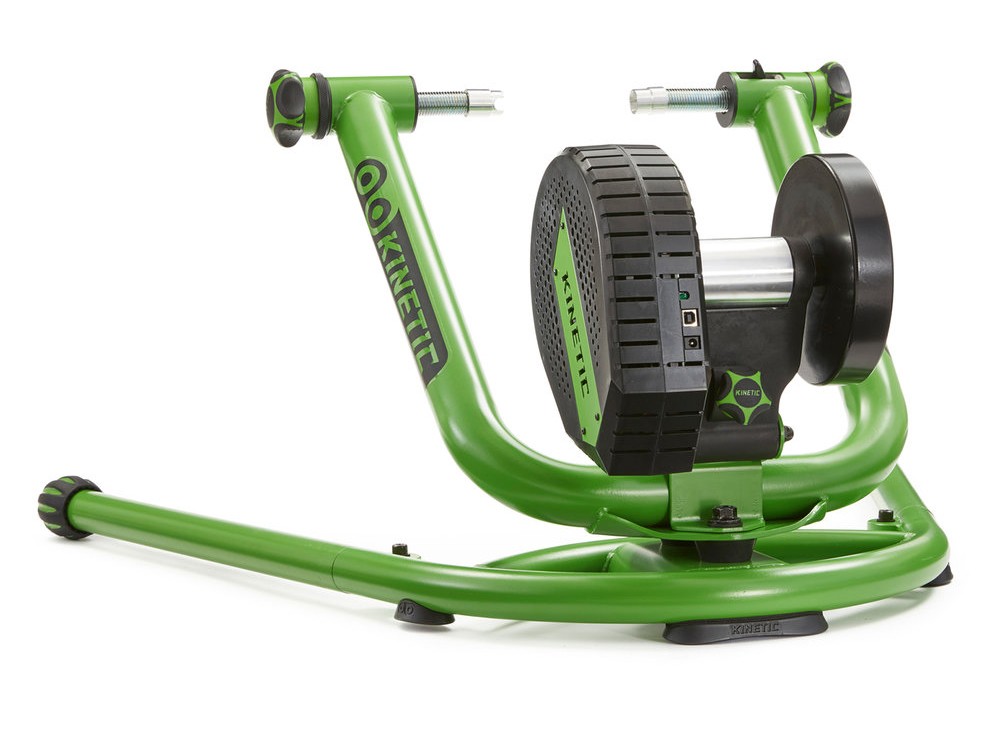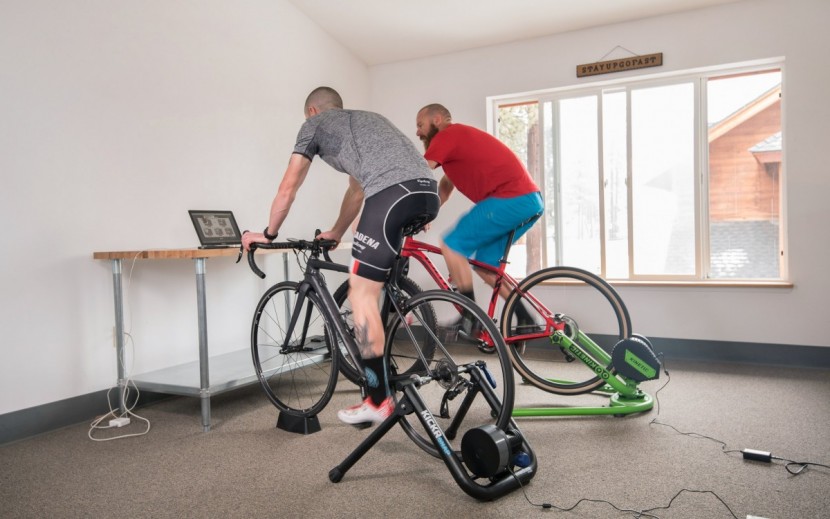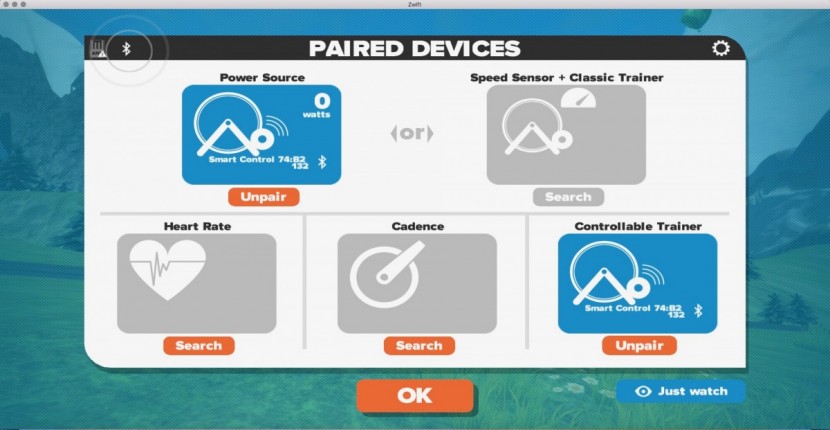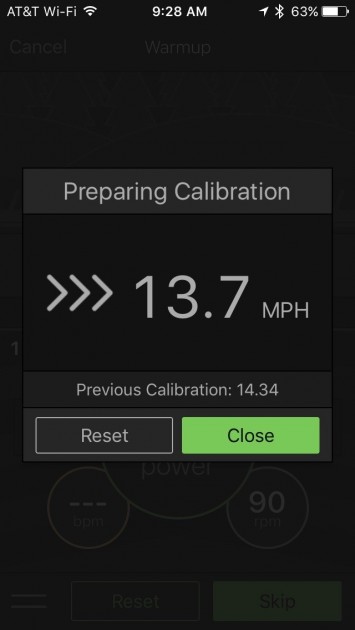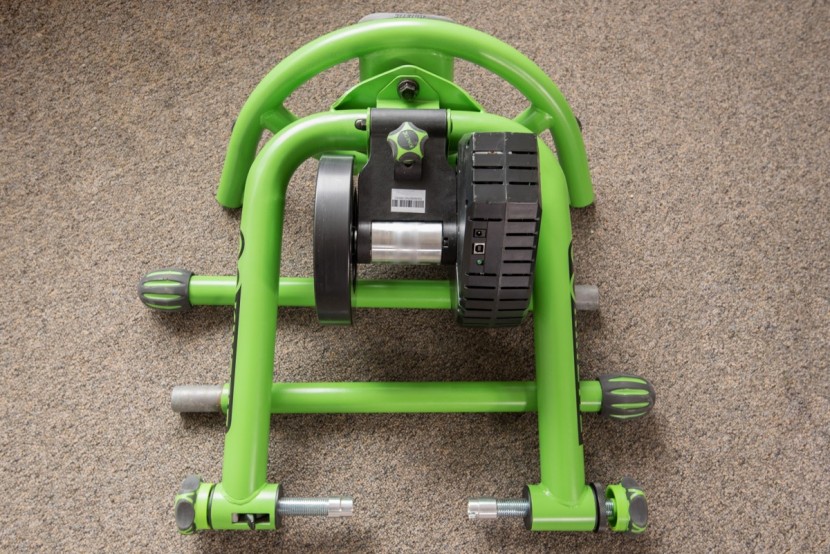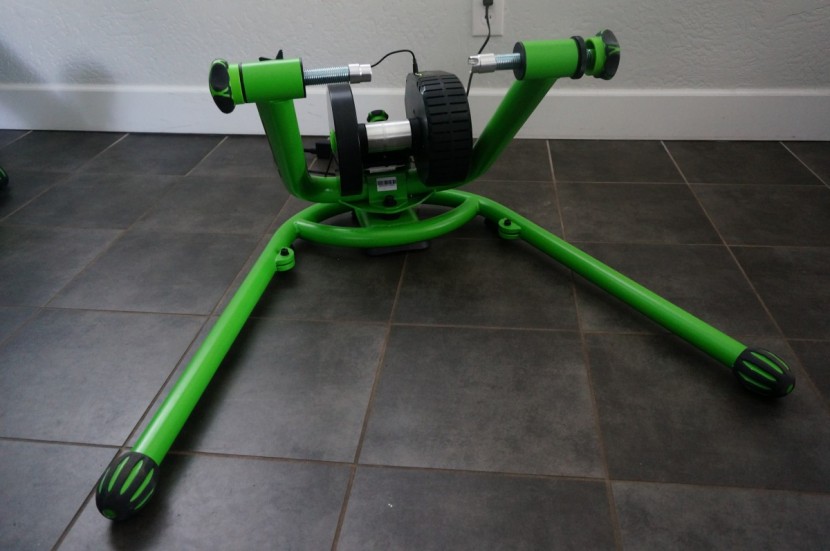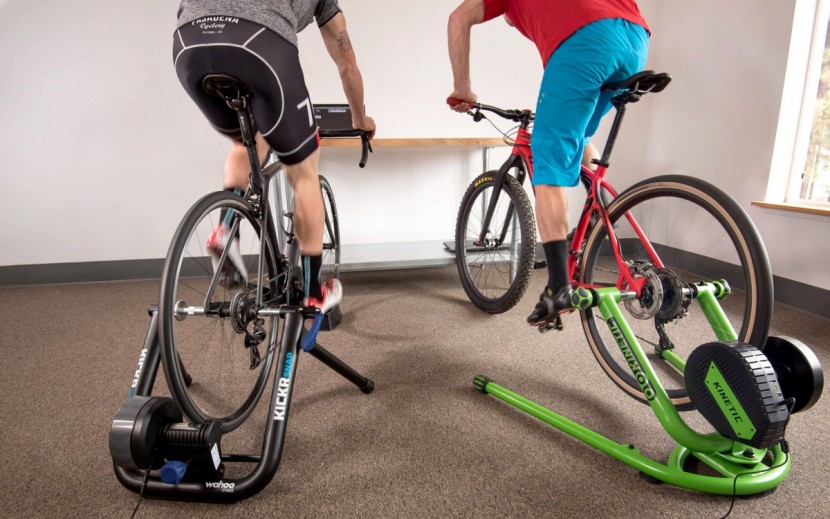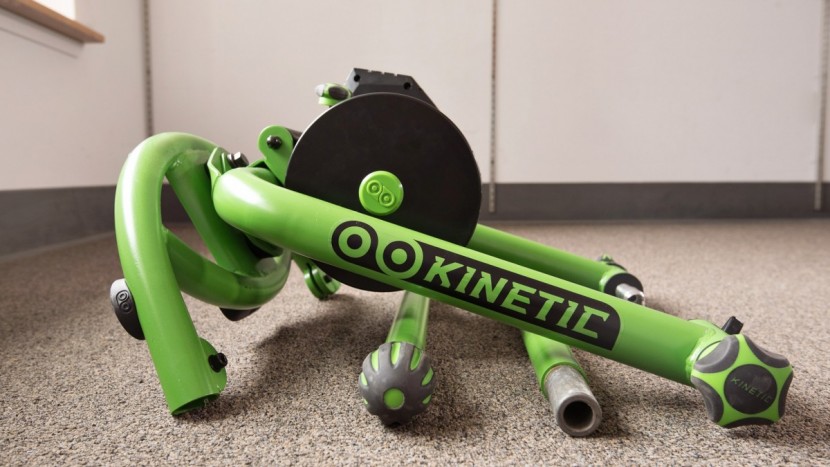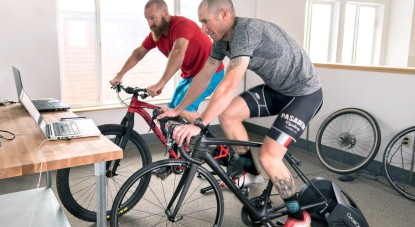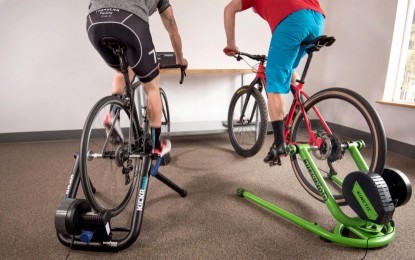Kinetic Rock and Roll Smart Control Review
Our Verdict
Our Analysis and Test Results
Kinetic has long been a leader in the stationary trainer market, with its mature Road Machine lineup being a testament to the quality products the company is known for. When Kinetic released their line of Smart Control trainers, both industry folks and consumers had high expectations for the well-regarded brand. They even did something that no other competitor could match, by offering a Smart Control resistance unit that could be retrofitted to an older Road Machine Frame. They applaud the idea, but in the end, we feel that Kinetic has missed the mark, at least partially by not including ANT+FEC control on their smart trainers. Kinetic is the only company to not include ANT+, and this hampers versatility with computers but also limits the pool of third-party applications that can be used with their trainers. Also, the price of this trainer is a bit steep, making it less competitive with other brands. The Rock and Roll is undoubtedly a well-built trainer, but was not a high scoring product in our review for a multitude of reasons we explore in the performance comparison below.
Connectivity and Power Accuracy
Kinetic, unlike most smart trainer manufacturers, has chosen not to use ANT+ FEC control for their trainers, relying solely on Bluetooth Smart for trainer control and power data transmission. We had a great deal of difficulty connecting to the Kinetic Fit application with an Android phone. Despite numerous attempts to troubleshoot the problem, including calls to customer support, we were unable to fix the issue. In contrast, we had no problem connecting the Rock and Roll using the same application on an IOS device. The Kinetic Fit application is loaded with features in the mobile form and was well liked by our testers who were using iPhones. Unfortunately, Kinetic Fit is only compatible with Apple TV, IOS Tablets, and Android Tablets. It does not work with Apple or Windows-based PCs.
This is a big letdown and limits the functionality of the application. Does it work with Zwift? Yes, it does, but once again, if you are trying to display Zwift on a Mac, you will need to use your smartphone with the Zwift companion application to connect and push the data to the computer. Confused yet? If you were using another smart trainer and you wanted to use Zwift on your desktop computer, all that is necessary is to connect an ANT+ dongle to the computer and you are in business because they almost all can use either ANT+ or Bluetooth. The bottom line is that connection to applications both proprietary and third party has been made unnecessarily complicated by Kinetics omission of the ANT+ standard.
Power accuracy was acceptable during testing. We found the Rock and Roll to fall within the 10-15 percent claimed range when tested against a Quarq crank-based power meter. When using the Kinetic Fit application, you are prompted to calibrate following a 10-minute warmup. This is a nice feature and takes the guesswork out of calibration and also is a good reminder in case you forget.
Portability
Weighing in at 47.5 lbs, the Rock and Roll is the heaviest trainer we tested and also receives the lowest score of any smart trainer in the test. The Hammer Direct Drive and Tacx Neo Smart come in at 47 lbs, but they are direct drive trainers. The Kickr Snap, a comparable tire drive model weighs 9.5lbs less than the Rock and Roll. The massive overall size of the trainer is a greater detriment to its portability than weight. The support legs have a width of 39.4" when extended for use, almost 10" wider than any other trainer we tested. Getting the Rock and Roll through a standard width doorway is nearly impossible. The legs do come off, but a hex key is required, and it is certainly not a procedure you would want to attempt on a regular basis. The Rock and Roll does give some resistance without an electrical connection. We were able to spin up to 250 watts, but this is almost a moot point as it is unlikely you would ever attempt to take such an unwieldy trainer anywhere for a pre-race warmup.
Design
Take one look at the Rock and Roll and it is easy to see that the trainer is built like a tank. The entire frame is made of steel tubing with a green powder coat for durability. The ground contact points all have heavy duty rubber pads. Compared to lower weight trainers like the Tacx Vortex, the Kinetic is clearly built to last. A unique feature on the Rock and Roll is the rubber pivot point which Kinetic claims is made of the same material used in automotive suspension bushings and is designed to last for the life of the trainer.
Accessories and Compatibility
A steel skewer is included with the Rock and Roll and must be used in place of the stock skewer on your bike. A riser block is not included, but we strongly recommend one if you plan to purchase this trainer. The best option is the Kinetic Turn Table Riser Ring, which allows the front wheel to turn in unison with the side to side motion of the trainer. Out of the box the Rock and Roll is compatible with 130mm and 135mm quick release frames with a tire size from 22" to 29". Traxle thru-axle adapters can be purchased through Kinetic for 142mm and 148mm sizes.
Road Feel
Riding the Rock and Roll is an interesting experience. We had high expectations of the rocking pivot action to increase the enjoyment of indoor riding. Unfortunately, we found the side to side motion to feel very unnatural. When you are sitting in the saddle riding outside, there is very little side to side motion as you pedal along. When riding the Rock and Roll the constant side to side sway is distracting and disconcerting. We like the feel when we are doing out of the saddle hard efforts, as the natural inclination is to throw the bike from side to side as you would on a steep out-of-the-saddle climb outside. The concept is interesting, but we prefer a trainer that is not in a constant state of lateral motion.
When pedaling along in the fluid mode on the Kinetic Fit application, the road feel is excellent, with a noticeable sense of inertia that does a great job of emulating the sensation of riding a bike on the road. Below we break down the road feel when using applications that adjust resistance.
Resistance ChangesResistance changes in SIM mode are rather harsh when compared to high-scoring products like the Hammer Direct. The Rock and Roll emits a whining growl, and the resistance does not feel smooth as you transition onto a hill when using Zwift or TrainerRoad. ERG mode resistance increases when doing intervals were equally poor, due to rapid transitions that we were unable to maintain momentum through.
Rider Power Output ChangesSudden increases in power seem to overstress the Rock and Roll and it responds by rapidly increasing resistance to an intolerable level.
Setup
The Kinetic scores a 4/10, and come mostly assembled out of the box. We break setup down below into initial and ongoing.
Initial SetupOnce out of the box, the support legs need to be attached to the main body of the trainer. This requires a hex tool and is not all that difficult, but the Rock and Roll is the only trainer we tested other than the Elite Direto and Tacx Vortex that require frame assembly prior to use. You must also replace the skewer on your bike with the included steel skewer provided by Kinetic. Attaching the bike to the trainer is the same process as you will find with the Road Machine. The drive side knob slides into position and the threaded tab is flipped down once you have contact with the skewer. Turn the knob until lateral movement of the wheel is eliminated. The resistance unit and tire drum need to be tensioned against the tire with a knob located on the rear of the tire. We found it more difficult to mount a bike in the Rock and Roll compared to other tire drive trainers because the resistance unit is very heavy and wants to fall forward into the tire, making it difficult to get the skewer clamped in position.
Ongoing Setup
If you remove your bike from the trainer, you will need to repeat the initial setup steps each time you use the trainer. Either way, tire pressure needs to be checked and tire drum tension set for accurate power measurement. You will also need to calibrate the trainer prior to every ride for accurate power data measurement.
Best Applications
This trainer is best suited to long-standing climbs and to be used in a fixed location, where it will not need to be moved.
Value
The Rock and Roll does not represent a good value. With an MSRP of $749, it is overpriced compared to other tire drive trainers such as the Kickr Snap which retails for less and provides much more.
Conclusion
The Rock and Roll Smart Control trainer left us a bit underwhelmed during testing. Connection issues and lack of ANT+ communication make it a hard product to recommend. We experienced less than responsive customer service support when trying to diagnose connection issues, leaving us frustrated. We hope that Kinetic resolves the issues that plague the product and return with a better product more representative of the quality we have come to expect from products such as the Road Machine Smart, our Best Tight Budget Buy Winner.


